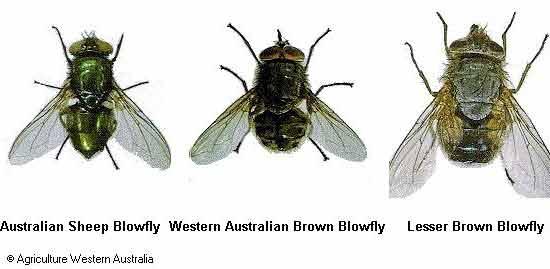Table Of Content

They have been used in ancient times as a medicine and can be nutritious as fish food. The stage is marked by heightened activity, including mating and breeding. Having developed fully functional wings, adult flies can either choose to infest your home or fly off to places with better feeding and breeding conditions. In order to keep the fly population under control in your home it helps to create an unfriendly environment for them. To start, adult house flies typically only live for about two weeks at most, provided there is an abundance of food available and no extreme temperature changes. In reality, many house flies don't even make it past a week due to various factors like predation or inclement weather.
How to Get Rid of Booklice - Book Lice Control Guide
Houseflies mate once, and the female then stores the sperm so she can use it later. She lays her eggs on rotting organic substances such as feces or food waste. That’s especially considering that one female fly can lay up to 150 eggs in a single batch, and that she can breed as much as six times during her lifespan. If allowed to breed freely, flies can contaminate food and food preparation surfaces, opening you up to a host of gastrointestinal complications.
Coping With the Flies of Fall - The New York Times
Coping With the Flies of Fall.
Posted: Thu, 10 Nov 2011 08:00:00 GMT [source]
Life cycle
It breaks down and reorganizes into an adult fly through a process known as histolysis and histogenesis, respectively. In simpler terms, old tissues dissolve while new ones are formed. During this stage, which lasts approximately four to seven days, depending on environmental conditions, the larvae undergo two molts. Each molt signifies a new instar or developmental stage within the larval phase. The first molt occurs within hours of hatching, leading to the second instar larvae which are larger in size than their predecessors.
Adult Stage: Characteristics And Lifespan
Smog in the city was first noticed in 1943 and has stuck around for decades. Sadly, Los Angeles is known to have the most contaminated air in the whole country. If you move to the city and drive a vehicle, all car owners must complete a smog inspection.
Their omnipresence is due to their remarkable adaptability to various conditions and environments. Houseflies thrive in diverse habitats ranging from rural farmlands to urban cityscapes. They are found everywhere humans dwell – hence their name, ‘housefly’.
Dealing With Fly Problem
Despite their reputation as pests due to their association with filth and disease transmission, adult houseflies play an important role in nature’s cycle by acting as decomposers. They help break down organic matter and return nutrients back into the ecosystem. A remarkable aspect of this phase is how quickly housefly larvae grow.
They cannot bite or chew; instead, they feed by regurgitating digestive juices onto solid food to liquefy it before sucking it up. This feeding habit plays a role in their potential to spread diseases as they often move between filth and human habitats. During this phase, which typically lasts from three days to two weeks, depending on environmental conditions, the larval body undergoes significant changes.
House Fly Identification
Unlike the larvae, which can directly consume solid organic matter, adult houseflies lack the mouthparts necessary for chewing food. Instead, they possess a unique sponging mechanism that allows them to ingest liquids only. Humidity is another crucial factor that affects the housefly’s life cycle. Housefly larvae, commonly known as maggots, require high humidity levels for their development.
Having a reputation for being a dangerous city, Los Angeles has seen a significant decline in crime rates compared to similar big cities in the United States. Once you decide to call Los Angeles home, contact our knowledgeable and experienced Realty Specialists to help guide you through the home-buying process. With the help of our team, find out what neighborhoods are best for you and what areas you should avoid. Contact us today to help you find your dream home in Los Angeles, California.

This stage is characterized by rapid growth and feeding on organic material. Females can deposit more than a hundred eggs at a time, usually in soil or food sources such as fermenting fruits or other decaying matter. Hatching can take several hours to a few days, depending on the species.
Some flies, such as house flies, can lay hundreds or even thousands of eggs in their lifetime. Moreover, houseflies contribute significantly to the process of decomposition and recycling organic matter. As detritivores – organisms that feed on decaying organic material – they help break down dead plants and animals into simpler forms of matter. This process returns essential nutrients back to the soil, promoting plant growth and maintaining soil health. It’s during this period that maggots encase themselves in a protective shell and metamorphose into adult flies. This transformation takes around four to six days under optimal conditions but can stretch out to two weeks when temperatures are cooler.

No comments:
Post a Comment